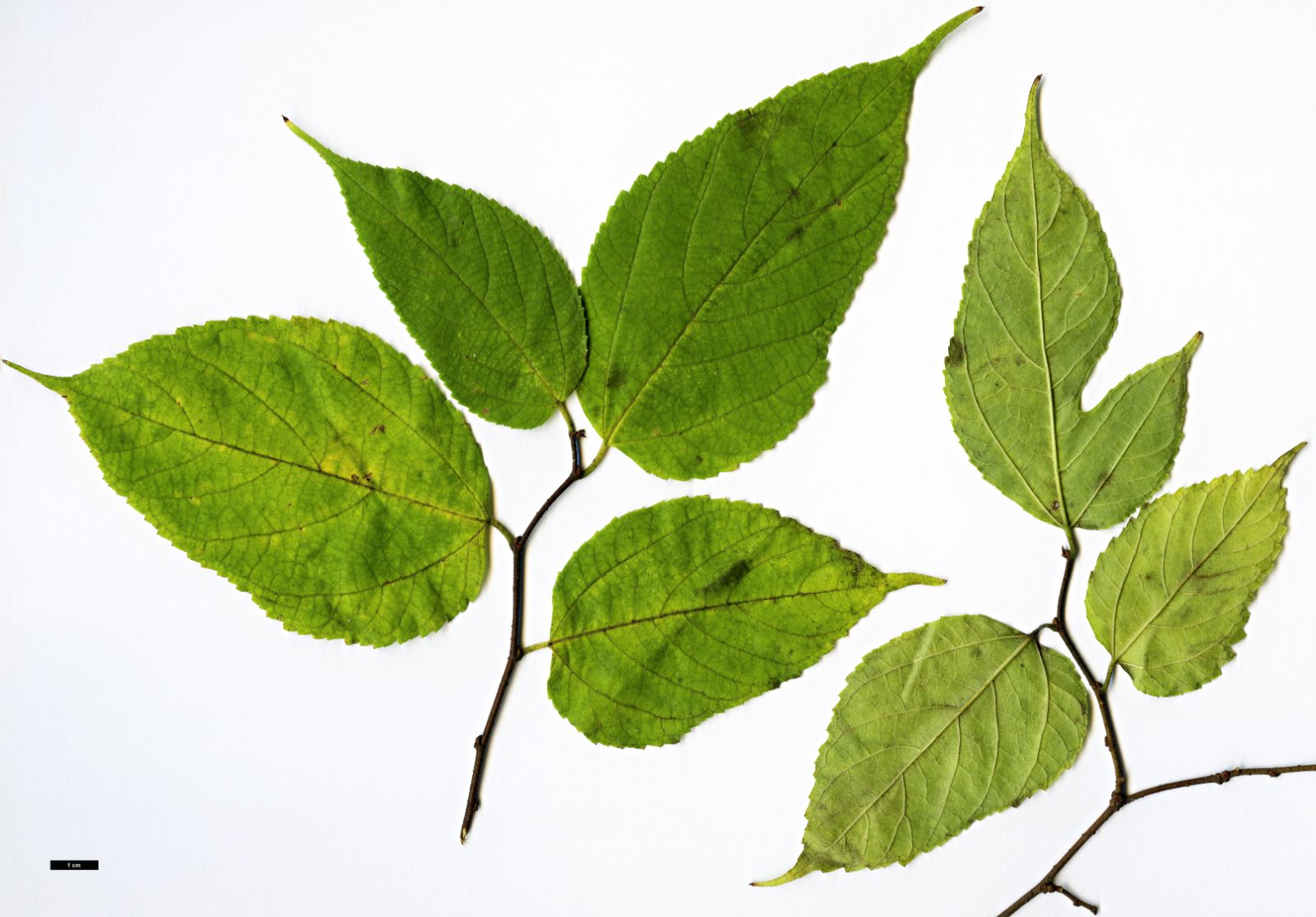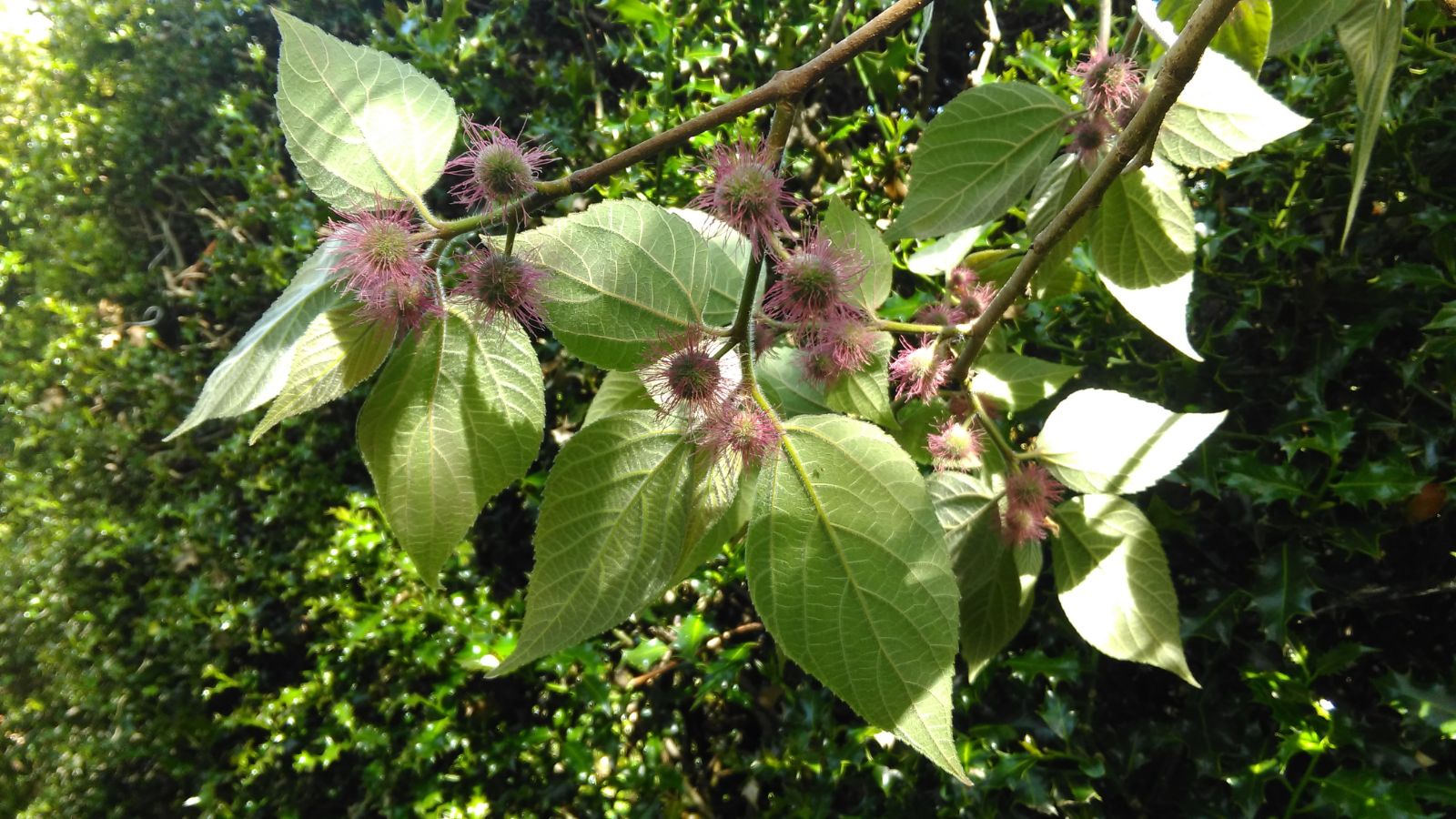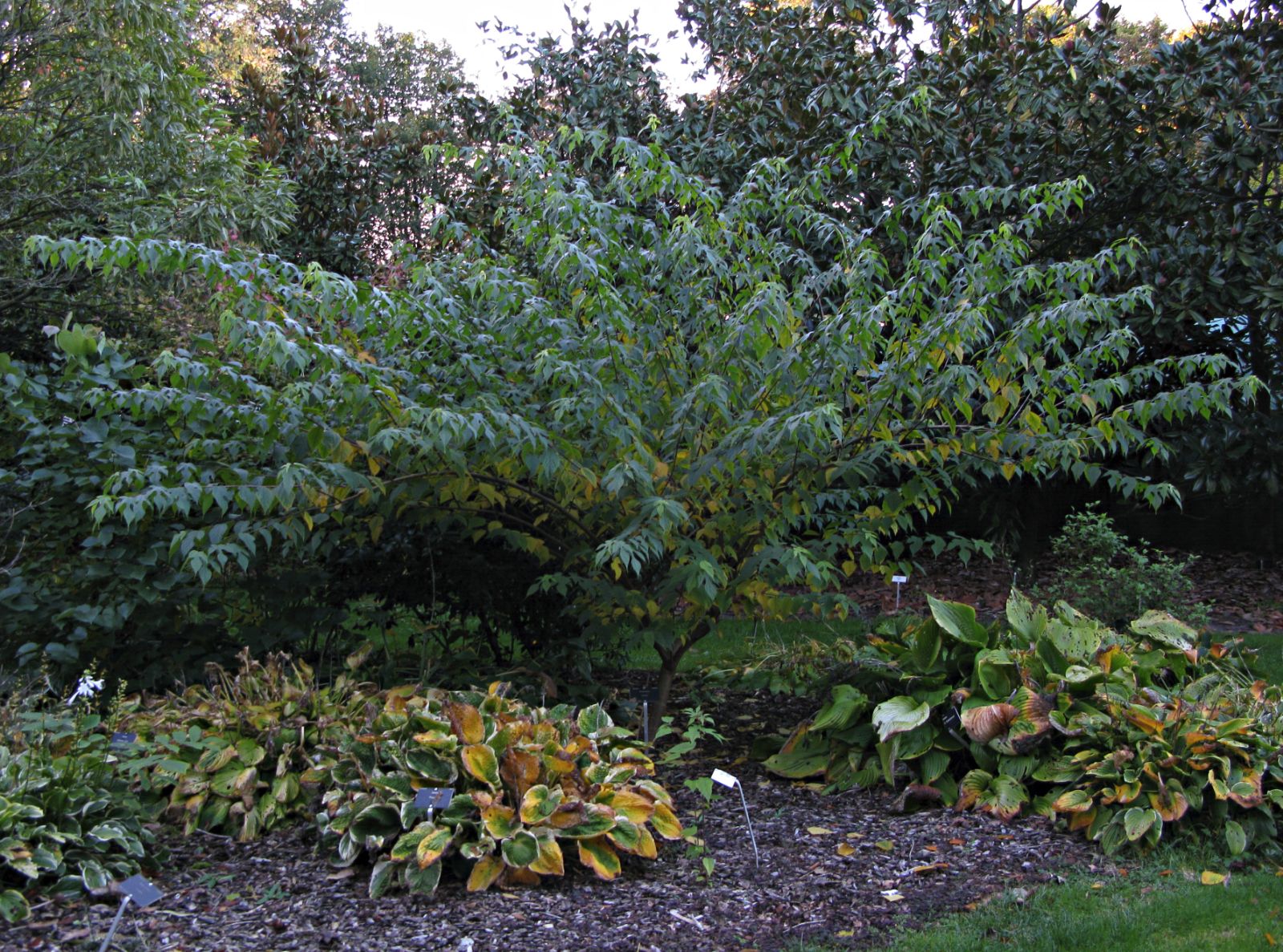Broussonetia
Sponsor
Kindly sponsored by a member of the International Dendrology Society.
Credits
Tom Christian (2022)
Recommended citation
Christian, T. (2022), 'Broussonetia' from the website Trees and Shrubs Online (treesandshrubsonline.
Family
- Moraceae
Synonyms
- Papyrius Lam. ex Cav.
- Smithiodendron Hu
- Stenochasma Miq.
Trees or shrubs, monoecious or dioecious, with latex. Winter buds small. Leaves alternate, spirally arranged, toothed, simple to palmately lobed. Inflorescences axillary. Male flowers in cylindrical catkins with (3–)4 calyx-lobes, stamens 4, curved inwards in bud. Female flowers in spherical heads; calyx lobes connate, tubular, with 3–4 teeth at apex, persistent in fruit, ovary enclosed; style simple, lateral; stigma linear. Fruit densely aggregate; syncarp globose, fleshy, hairy, projecting from calyx. (Cullen et al. 2011; Wu, Zhou & Gilbert 2003).
Named for Pierre Broussonet (1761–1807), Professor of Botany at le Jardin des Plantes de Montpellier, Broussonetia is a genus of trees, shrubs and large climbers closely allied to the Mulberries (Morus L.). They differ in details of the female flowers and the fruit; in Broussonetia the female flowers have four distinct sepals whereas in Morus these overlap to form a tubular calyx; the fleshy fruits of Morus are well known, whereas in Broussonetia these are usually smaller, spherical, with long hairs protruding from all around (Cullen et al. 2011). Despite its small size Broussonetia is plagued by the same taxonomic uncertainty that characterises the rest of the Moraceae, a cosmopolitan family chiefly distributed in the tropics and sub-tropics which includes the significant yet poorly understood genus Ficus. Several members of the Moraceae are economically significant: Morus itself is a keystone of the silk industry; Ficus is a source of rubber; and several genera but especially Broussonetia have for millennia been an important source of fibres, food, medicines and timber.
At present, literature suggests an emerging consensus that Broussonetia comprises approximately four species. This rather represents the taxonomy coming full circle: prior to 1962 the genus was generally considered to contain three species, but then E.J.H. Corner revised the genus and included those species previously assigned to Allaeanthus Thwaites. Recent molecular investigations support the segregation of Allaeanthus and return Broussonetia to a three or four species concept, comprising B. kaempferi Siebold, B. × kazinoki Siebold, B. monoica Hance, and B. papyrifera (L.) L’Hér. ex Vent. (Chung et al. 2017). The Kew resource Plants of the World Online additionally recognises B. harmandii Gagnep. but otherwise adopts Chung et al.’s view. The concept adopted in Flora of China (Wu, Zhou & Gilbert 2003) has become rather outdated, particularly in its use of the names B. kurzii (now Allaeanthus kurzii) and B. kaempferi var. australis T. Suzuki which Chung et al. (2017) have shown to be synonymous with B. monoica Hance.
The accepted species of Broussonetia are native to southern and eastern China and adjacent parts of India and south east Asia, the Korean peninsula, and central and southern Japan (Chung et al. 2017). All have a long history of cultivation within their native ranges, but most especially B. papyrifera which may be found in abundance – often naturalised – across southern Asia and the Indian and Pacific Ocean regions, where it has a long history of introduction, cultivation, localised extinction, and reintroduction. One of the consequences of this is that reports of its distribution are ‘highly inconsistent’ (Chung et al. 2017) with the result that its true region of origin can only be inferred from its sister species.
In the northern temperate zone only B. papyrifera is commonly cultivated, almost exclusively as an ornamental. B. × kazinoki may also be found in gardens, but not so often. The climbing species B. kaempferi is largely sub-tropical and is therefore beyond the scope of this work, while B. monoica is not known to be cultivated in our area. The hardy species will grow in any moderately fertile, well-drained soil, but are at their best in a sheltered spot in areas with reliable summer heat; some of the best specimens may be found in areas with a continental climate. Both are ‘easily increased by summer cuttings, and sprout prolifically from damaged roots. These should be made in July or August, of short shoots with a heel of older wood attached’ (Bean 1976). Bean was rather dismisssive of this genus in British gardens but it may yet prove one of the horticultural ‘winners’ from the effects of climate change, notwithstanding a tendency to invasiveness which demands caution.
Another feature of the Moraceae that may be observed in this genus is remarkably polymorphic foliage. Vigorous young growth, whether on young plants or old, often bears deeply lobed leaves that can vary significantly in size and shape compared with those on established specimens or on older wood. Observations that B. × kazinoki is more inclined to bear lobed leaves than B. papyrifera are helpful but should not be relied upon as absolutely diagnostic; the persistently hairy leaves and branchlets of B. papyrifera are more useful characters.
The fruits of both B. papyrifera and B. × kazinoki are attractive, with orange drupelets; they are tasty, but contain sharp hairs that are very irritating in the mouth and throat (teste John Grimshaw, pers. comm. 2022).




